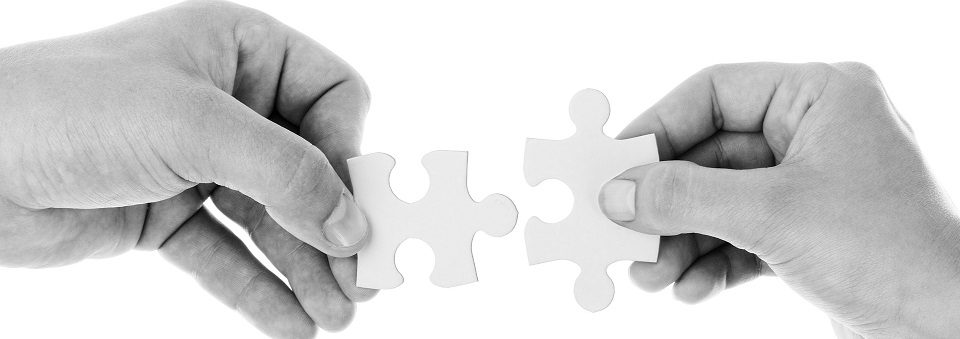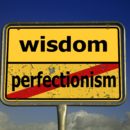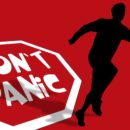Popular Posts
Want to become a patient?
Upcoming Events
Most Recent Articles
Test Anxiety & Test-taking Anxiety Myths
Although most of us (at one point or another) have experienced significant fear, uncertainty, or dread about an upcoming examination or evaluation, oftentimes these milestones pass without incident. We get scared, our hearts race, and we ultimately live to fight another day. For millions of Americans, however, test anxiety poses potentially serious, life-altering problems that can indelibly change the trajectory of one’s career, permanently limit one’s options, and ravage one’s self-confidence. Let’s dispel some common myths about test-taking anxiety. These myths are derived from actual (mis)statements people have made to me in my South Florida (Palm Beach Gardens, Jupiter, West Palm Beach, Fort Lauderdale, Boca Raton, Boynton Beach, & Miami) psychological practice. Test Anxiety Myths Myth #1. Test anxiety is only a problem for students (i.e., once you’re out of school, test anxiety is irrelevant). FALSE. Although test anxiety has been estimated to affect up to 25% of school-aged children and adolescents (Hill & Wigfield, 1984) and 15-20% of college-aged students (Hill & Wigfield, 1984; Eysenck & Rachman, 1965), non-students are not immune to its effects. In fact, test anxiety can actually manifest some of its most devastating consequences after you graduate. Many professionals in the medical, legal, scientific, and other communities know this firsthand. In truth, many untreated anxious test-takers give up desired...
Read More“Pure-O” OCD: Common Obsessions & Mental Rituals
As a follow-up to my previous post on Pure-O OCD, I thought it might be helpful to identify some obsessions that are commonly reported by individuals with Pure Obsessional OCD. These same obsessions may also be experienced by individuals with non-Pure-O forms of the disorder. Keep in mind that some of these symptoms are quite common (when experienced in a limited form) and may or may not represent an underlying psychological condition. If you experience symptoms like these, consult with your doctor for clarification. I am also available to conduct assessments and provide treatment if you’re located in South Florida (Palm Beach Gardens, Jupiter, West Palm Beach, Fort Lauderdale, Boca Raton, Boynton Beach, & Miami). Remember that most people who have Pure-O OCD actually perform compulsions. These compulsions just tend to be mental rather than behavioral in nature. Mental rituals are varied and include such activities as repeating certain words or phrases in one’s head, counting, reviewing/checking memories, intentionally thinking “positive thoughts” to counteract “negative thoughts”, pre-planning words before speaking, making mental lists of similarities between one’s own experience and others’ experiences, conducting online research to prove or disprove a fear, or repeating/restarting prayers due to distraction or worry that one’s prayers are not 100% genuine. For some individuals, mental rituals also include complex cognitions....
Read MorePure-O OCD (Pure Obsessional OCD): Hidden Rituals
“Pure-O” OCD, or Pure Obsessional OCD, is a relatively less common form of OCD that seemingly differs from classic presentations of the illness. What distinguishes Pure Obsessional OCD from classic OCD is that in Pure-O OCD, symptoms are predominantly obsessive (rather than compulsive) in nature. Although individuals with Pure-O OCD frequently experience intense and distressing obsessions, they typically report few (if any) overt compulsive behaviors. However, in almost all cases, pure obsessionals do engage in a variety of rituals. These rituals just manifest as mental compulsions rather than behavioral compulsions. Unfortunately, most psychologists haven’t been trained in how to ask the types of questions that are necessary to identify these “hidden rituals.” As a consequence, these rituals often go undetected. Because effective treatment requires consistent response prevention, a failure to recognize and resist mental compulsions makes true exposure and response prevention (ERP) impossible. Treatment then proceeds in an ineffective and haphazard way, with neither the patient nor the therapist any the wiser. Not surprisingly, treatment for Pure-O OCD often fails. However, treatment failure occurs not because the patient is an ERP non-responder, but rather because the most important part of treatment (i.e., response prevention) was unknowingly omitted. Sadly, many individuals with OCD wrongly get labeled as being treatment refractory (treatment resistant), even though they have never undergone a single...
Read MoreExposure & Response Prevention (ERP) for OCD: Treatment Mechanism
How does ERP work? What mechanism underlies it? Obsessive-compulsive disorder (OCD) is characterized by obsessions and compulsions. Obsessions are disturbing thoughts, images, or impulses that increase feelings of anxiety. Compulsions (also known as “rituals”) are the strategies that individuals with OCD use to reduce the anxiety associated with obsessions. Rituals are effective coping strategies in the short-term, in that they lead to fairly rapid decreases in anxiety. However, rituals are considered maladaptive, because the anxiety relief they bring is short-lived. Engaging in rituals ultimately increases the likelihood that obsessions will be re-experienced in the future. This can be thought of as a positive feedback loop, in which compulsive behavior indirectly reinforces obsessions. This is depicted in the bottom half of the included figure. The treatment of choice for OCD is exposure and response prevention (ERP), which not surprisingly, has two main components: 1) exposure, and 2) response prevention. Response prevention refers to purposefully inhibiting one’s rituals, whereas exposure refers to willingly entering situations that are likely to trigger obsessions. Both exposure and response prevention elements are necessary for making meaningful treatment gains. Response prevention is the critical component in “short-circuiting” the positive feedback loop in OCD. When one implements regular response prevention, obsessions are no longer reinforced and ultimately decrease in frequency and intensity....
Read MoreObsessive-Compulsive Disorder (OCD) – Decision Making Abnormalities
Does OCD affect decision making processes? Now that we have reviewed the neurobiology of OCD and cognitive deficits associated with OCD, what relevance might this have for predicting abnormalities on tasks of decision making? Sachdev and Malhi (2005) recently have drawn attention to the substantial overlap between the circuitry implicated in OCD and the circuitry required for intact performance on simple decision tasks. They suggest that due to the commonalities of these neural systems, individuals with OCD would be expected to exhibit deficits on tasks of decision making. Furthermore, they indicate that OCD might even be conceptualized appropriately as a disorder of decision making, given that many of the hallmark features of the disorder seemingly arise from a primary deficit in decision making processes. For example, OCD doubt and the inability to decide whether or not one’s hands have been washed sufficiently might reflect a general problem with processing decision-relevant information (i.e., recognizing the information value of a handwashing behavior). Their theory focuses largely on dysfunction within prefrontal cortex and other closely interconnected regions. As noted previously, the PFC includes the dorsolateral prefrontal cortex (DLPFC), the orbitofrontal cortex (OFC) and the anterior cingulate cortex (ACC). The DLPFC is thought to facilitate decision making by processing and evaluating multiple environmental stimuli with the aid of...
Read MoreObsessive-Compulsive Disorder (OCD) – Cognitive Deficits
What cognitive deficits are associated with OCD? Research has been successful in characterizing the underlying neurobiology of OCD, and cognitive abnormalities associated with the disorder have been documented within the domains of basic learning processes, attention, and executive functioning, each of which arguably is requisite for intact decision making. We will begin by highlighting abnormalities in basic associative learning processes that have been observed in OCD and subsequently will extend our discussion to higher level cognitive processes. Basic Associative Learning in OCD The idea that pathological anxiety might develop initially via basic associative learning mechanisms was advanced largely by Mowrer (1939), who proposed a two factor theory about anxiety development. Mowrer (1939) hypothesized that during an initial learning stage, anxiety develops via classical conditioning processes. This occurs when a neutral cue becomes associated with fear due to a negative event. Subsequent re-exposure to this previously neutral cue reactivates the somatic state of anxiety. During a second stage of learning, the newly acquired anxiety is maintained and facilitated through operant reinforcement, such that the fear and anxiety aroused by exposure to the anxiety-eliciting cue is reduced by engaging in negatively reinforcing, stereotyped behaviors. The anxiety reduction obtained by engaging in these responses is rewarding which increases the likelihood that these operant responses will be repeated...
Read MoreObsessive-Compulsive Disorder (OCD) – Neurobiology
What causes OCD? Researchers have had much recent success in elucidating the neural circuitry involved in obsessive-compulsive disorder (OCD). Advances in functional neuroimaging have identified robust alterations in neural activity within particular functional circuits in individuals with the disorder (Graybiel & Rauch, 2000). Specifically, OCD is associated with pervasive disruptions in frontal subcortical circuitry (Luxenberg et al., 1988; Robinson et al., 1995). Before we discuss abnormalities in this circuitry related to OCD, it is worth reviewing the generalities of this neural system. Frontal subcortical circuitry in OCD According to Tekin and Cummings (2002), frontal subcortical circuits share several commonalities. They often “originate in prefrontal cortex, project to the striatum (caudate, putamen, ventral striatum), connect to the globus pallidus and substantia nigra and from there connect to the thalamus. There is a final link back to the frontal cortex [such that] each circuit forms a closed loop” . The prefrontal cortex (PFC) can be subdivided into several regions including the dorsolateral prefrontal cortex (DLPFC), the orbitofrontal cortex (OFC) and the anterior cingulate cortex (ACC); and these subregions are involved in separate circuits (the DLPF circuit, the OF circuit, and the AC circuit, respectively). These circuits have been implicated in various functional tasks. Individuals with dysfunction in DLPFC areas often exhibit deficits in attention, reasoning, and...
Read MoreObsessive-Compulsive Disorder (OCD) – Overview
What is OCD? Obsessive-compulsive disorder (OCD) is a debilitating mental illness that affects nearly 2.5% of the population (American Psychiatric Association, 2000). The primary features of the disorder include obsessions, which are recurrent and persistent thoughts, impulses, or images that cause severe anxiety and distress; and compulsions, repetitive behaviors or mental acts performed in response to an obsession. Compulsions frequently are performed to reduce distress or prevent a dreaded event or situation from occurring. Because individuals with OCD often spend many hours each day experiencing obsessive-compulsive symptoms, the disorder severely impairs functioning across a variety of domains. According to Rasmussen (2005), individuals with OCD tend to adhere to highly rigid and disciplined notions about how to do things properly, “sacrificing opportunities for positive, pleasurable activities to maintain a position of disciplined appropriateness” . Consistent with this view, cognitive rigidity has been proposed as a hallmark feature of the disorder. Even in the absence of clinical OCD, individuals who exhibit a high degree of obsessive-compulsive characteristics also have been shown to be cognitively and behaviorally rigid (e.g., Cabedo, Belloch, Morillo, Jiménez, & Carrió, 2004; Mythili & Devi, 1982; Zohar, LaBuda, & Moschel-Ravid, 1995). In an early description of OCD, Lion (1942) described a group of individuals diagnosed with “anancastic depression[1]” as being “indecisive, scrupulous, markedly...
Read MoreSocial media (Twitter, Facebook, Google+) in a psychological practice
Lately, I’ve been experimenting with new and better ways of incorporating social media tools into my practice. Just yesterday, I developed a list of CBT-based exposure ideas for reducing symptoms of OCD, perfectionism, and social anxiety. What was unique about these exposure ideas was that they were all targeted specifically toward actions one might take online using social media communities like Twitter and Facebook. Using these very same social media tools, I was able to quickly distribute this content to several different online communities. Although this face of my practice is virtually brand new, I can already see the power in it. Although my readership is still small, it’s growing (of course, you could always help it grow faster by following me on Twitter, Facebook, or Google+). The use of social media tools within a professional mental health practice is potentially game-changing. It becomes simple to disseminate information rapidly, including my blog posts which represent some of the ideas that are foremost in my mind at any given time. Twitter, Facebook, and Google+ also allow me to interact with my readership in a new and dynamic way, giving me the means by which to get direct feedback and reactions from the larger public. These tools give me a venue to discuss the ideas that excite me,...
Read MoreOCD perfectionism & social anxiety treatment: Tweet your way to greater health
Looking for ways to overcome social anxiety or OCD-related perfectionism? At the end of this post, you’ll find some strategies I use to help individuals in South Florida (Palm Beach, Fort Lauderdale, Boca Raton, Boynton Beach, & Miami) overcome their anxiety. These exercises are examples of “Intentional Mistake Practice“, a CBT-based technique that can be used to challenge some of the problematic perfectionistic beliefs that are central to social anxiety and OCD. First, though, what do social anxiety and OCD-related perfectionism have in common? Although on the surface, these anxiety disorders are quite different, individuals with social phobia and OCD often share many perfectionistic beliefs about the world. Social anxiety (or “social phobia”) is characterized by excessive worry about being perceived negatively by others. Individuals with social phobia often have perfectionistic expectations about their own behavior and question their social competence. They fear potential shame, embarrassment, or rejection in social settings. In OCD, perfectionistic cognitions may also involve “performing” in front of others but more often involve personal perfectionistic standards. These individuals often feel a moral imperative to live up to their true potential. They often seek to give nothing but their best (100% of the time) and fear making mistakes because of what this might imply about their value as a person. Many research studies...
Read MorePerfectionism in OCD: When the pursuit of success turns toxic
There is more than one type of perfectionist. First, there is the adaptive perfectionist. This perfectionist is the prototypical workaholic student/employee who goes above and beyond expectations. This person is intelligent, hard-working, dependable, and passionate about meeting or beating deadlines. He or she sets high personal standards of performance and has an attention to detail that is appreciated by (and often draws accolades from) others. However, not every perfectionist resembles this prototype. There is another type of perfectionism that might be affecting you or someone you know. This perfectionist doesn’t quite look like the adaptive perfectionist, and based on his or her observable behavior, their perfectionism might not even be readily apparent. Nevertheless, the maladaptive perfectionist shares many features in common with the adaptive perfectionist. Similar to the adaptive perfectionist, the maladaptive perfectionist is likely to be intelligent and articulate. He or she has very high standards and feels passionately about the importance of hard work. Yet in contrast to the adaptive perfectionist, the maladaptive perfectionist often misses deadlines and fails to deliver an exceptional work product (or, in some cases, any work at all). He or she might even be considered lazy or irresponsible by others. However, the maladaptive perfectionist is usually far from lazy; despite a lack of tangible output, he or she often spends an overabundance of time and...
Read MoreAlthough it might feel like you’re dying, you’re not. That’s just what the panic wants you to think.
Disclaimer: Because panic attacks can mimic the symptoms of several serious medical conditions, it’s important that you talk with your doctor before beginning any panic treatment program. Never begin panic treatment without first obtaining medical clearance from your physician. Panic attacks feel horrible. If you are one of the 5% of Americans suffering from recurrent panic attacks due to panic disorder, you are likely well-acquainted with the nasty constellation of physical sensations that occur during a full-blown panic attack. Panic attack symptoms are frightening and often include accelerated heart rate, sweating, trembling, choking or smothering sensations, chest pain, nausea or GI problems, dizziness, lightheadedness, feelings of unreality or detachment from one’s body, numbness or tingling sensations, chills, and hot flashes (Barlowe & Craske, 2006). These symptoms reflect activation of the body’s fight-or-flight system, which has been implicated in panic. Physical symptoms frequently co-occur with intense worries and fears, such as fear of dying, losing control, or going crazy. One of the primary reasons that panic is so scary is because it often masquerades as something other than itself. Just ask the closest ER doc, who might tell you that up to 20% of ER visits are panic-related (Julien, 2001). In many cases, individuals who have panic attacks don’t understand what’s happening to their bodies and misinterpret panic attack...
Read MoreParenting Kids & Teens with OCD: Don’t Feed the Reassurance Monster…and Other Quick Tips
Many excellent parents struggle with how to appropriately parent their child/teen with obsessive-compulsive disorder (OCD). Unfortunately, this process is rarely straightforward and is often counter-intuitive, which leaves many parents feeling anxious and confused. As a psychologist in Palm Beach County, Florida, I work closely with kids, teens, and parents throughout the greater Palm Beach, Fort Lauderdale, and Miami areas on strategies for recovering from OCD. I also run a free support group for kids/teens with OCD. Consider the following set of ground rules for parenting your child with OCD. The strategies you adopt as a parent can mean the difference between reducing your child’s symptoms or giving these symptoms room to grow. 1. Remind yourself that OCD is based on emotion rather than logic. Many parents get tripped up and frustrated by the many illogical forms that OCD takes. If you consider OCD to be a logical process, you’ll inevitably become vulnerable to using lecturing and/or chastising as your primary intervention. However, if you correctly recognize that OCD is based on intolerance of doubt and uncertainty, it is much easier to implement behavioral strategies that are exposure-based and will decrease symptoms over time. One example of an exposure-based strategy might be eating dinner while intentionally making statements related to contamination. These might include, “Pass me the...
Read MoreTrichotillomania: Goodbye “Trich Police”, Hello HRT
Imagine that you have a rather large blemish right in the middle of your forehead. It’s not one of those pseudo-invisible blemishes that can only be perceived by you. Rather, it’s an angry, red mark that is readily apparent to nearly all the people with whom you interact throughout the day. Most people are polite enough and don’t acknowledge it out loud, although you can sometimes feel their lingering gazes. Others are less discrete, and you’re forced to have a short conversation about it. Neither situation is welcome; in fact, you’re beginning to wish that you had just stayed at home. Now imagine that multiple times throughout the day, a well-meaning person gives you advice on skin care. At first maybe this advice is welcome, and you might even be exposed to some new ideas that you wouldn’t have thought of on your own. But suppose this advice continues to come again…and again…and again. It really doesn’t take very long before you come to resent this well-intentioned advice, and you’re going out of your way to avoid this person. Sadly, similar situations play out almost daily for many individuals with trichotillomania, or “trich”. To be clear, trichotillomania has nothing to do with blemishes; it’s an impulse-control disorder associated with compulsive hair pulling. However, just...
Read MoreTo tweet or not to tweet (aka, keeping private things private in the Facebook/Twitter era)
Social media tools like Facebook and Twitter are poised to revolutionize healthcare. Social media sites can be useful for quickly disseminating health-related information and giving users a place to connect around shared interests. In some cases, online support communities have supplanted the traditional support group model. In other cases, social media tools are actually being adapted for treatment purposes (e.g., anxiety treatment via social media tools). As helpful as these sites might be, however, they pose potential privacy risks for users. Users respond to these risks in very different ways. There is a category of folks who openly blog/tweet/post status updates related to their anxiety and other mental health concerns, and there are those who would much rather keep this information private. Nowhere is this more apparent than on Twitter, where you can get a virtual minute-to-minute (or, in some cases, second-to-second) account of the trials and tribulations faced by individuals throughout their days. Although some people lock down their Twitter accounts and must approve all new followers, I consider Twitter to be a fairly open medium. On Facebook, however, most people only share status updates with their friends. Some people make use of Facebook lists, of course, which allows selective sharing of information, but most people I know don’t utilize this feature. Tools...
Read MoreHoarding: Treatment, symptoms, and personal impact/costs
The topic of hoarding is rarely met with disinterest. Maybe that’s because nearly all of us can relate to hoarding on one level or another. Perhaps you yourself have been touched personally by hoarding. You may have a strong emotional attachment to objects, or you may have a loved one who inexplicably continues to add to an already existing surplus of items. This surplus may be small, or it may be quickly exhausting all remaining living space. Perhaps you don’t have issues with surplus, but you consider yourself a “pack rat” or a “collector”. Maybe you have a nice collection of art or knickknacks, and you can relate to the urge to over-acquire. Perhaps you are “organizationally challenged” and have struggled with how to best categorize and store your possessions. Maybe you have difficulties with throwing out your newspapers before you’ve read them, or you hold onto your old college textbooks just in case you might need them one day. Maybe your counters are overflowing with unopened or unfiled mail, receipts, and to-do lists. Perhaps you are a viewer of one of the recent television shows devoted to various aspects of hoarding. Maybe you watch Hoarders on A&E, Hoarding: Buried Alive on TLC, or Confessions: Animal Hoarding on Animal Planet, and you’re fascinated with the how’s and why’s of hoarding. Although...
Read More




































